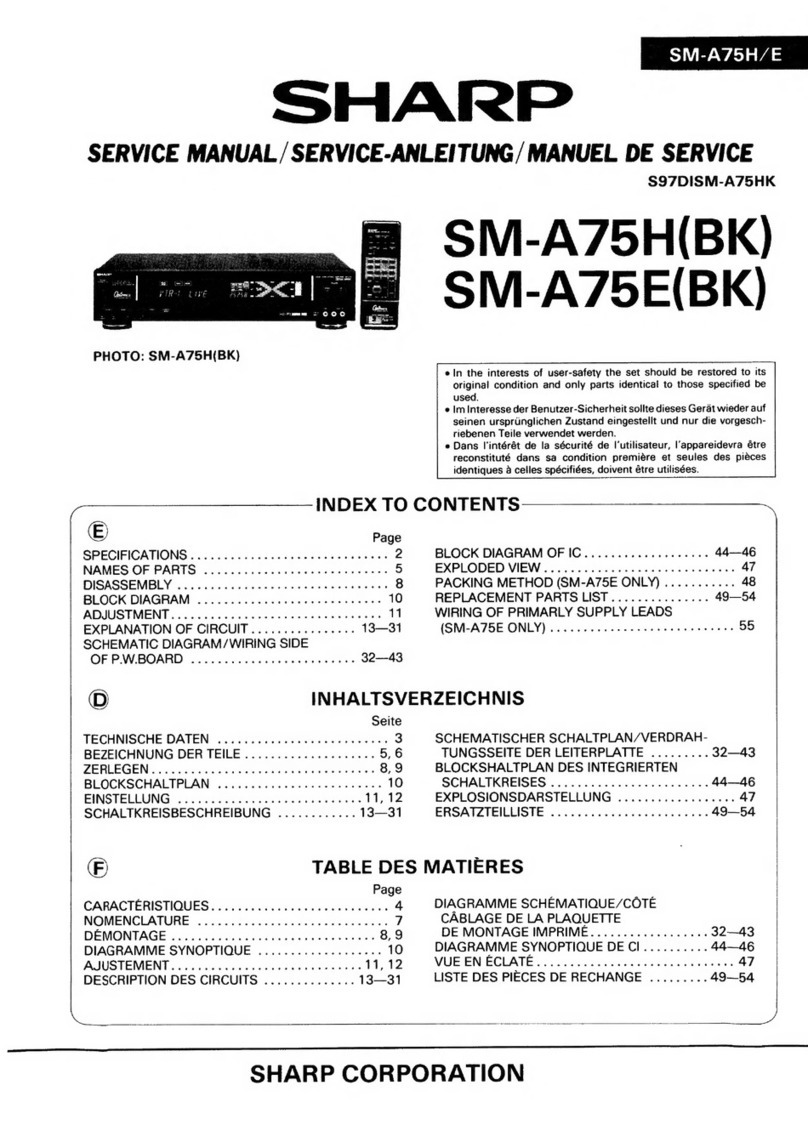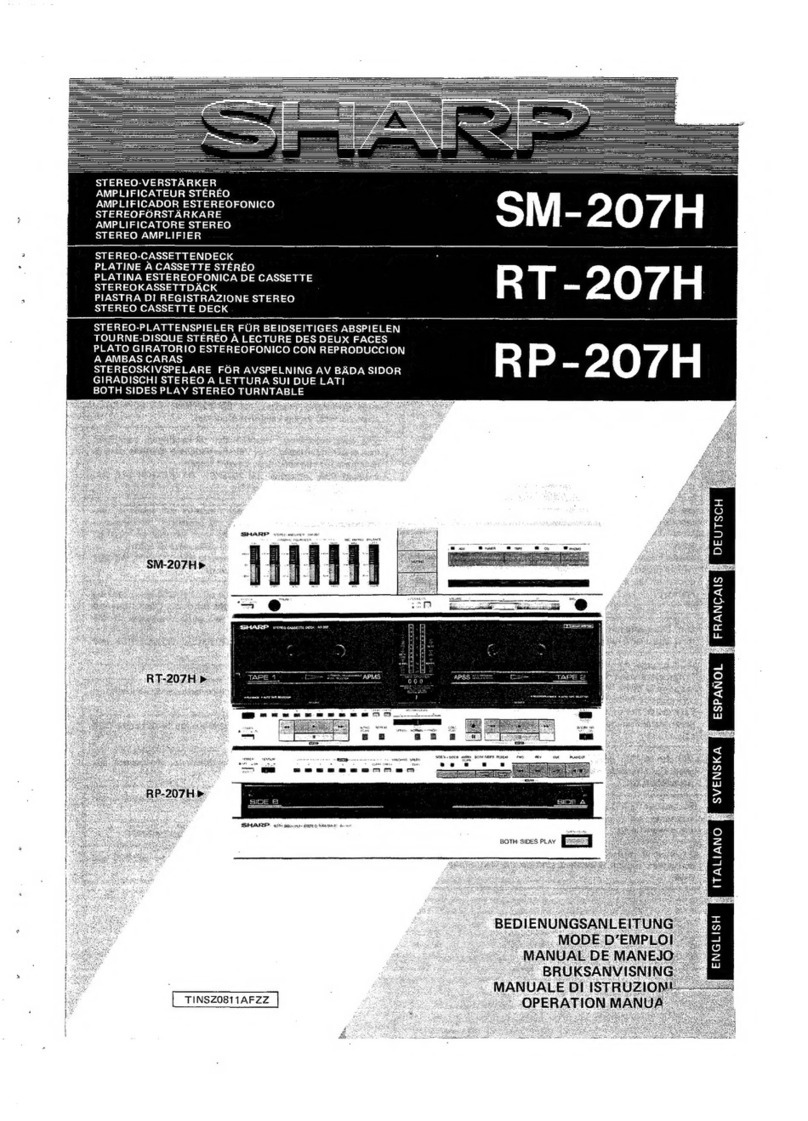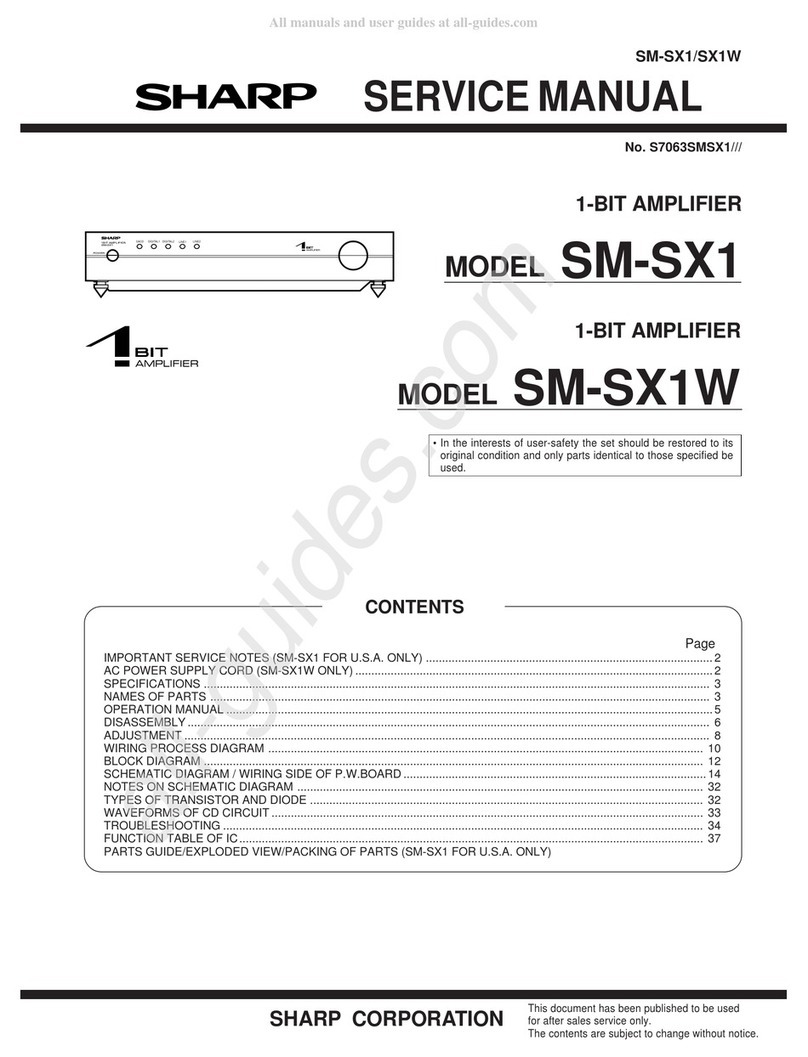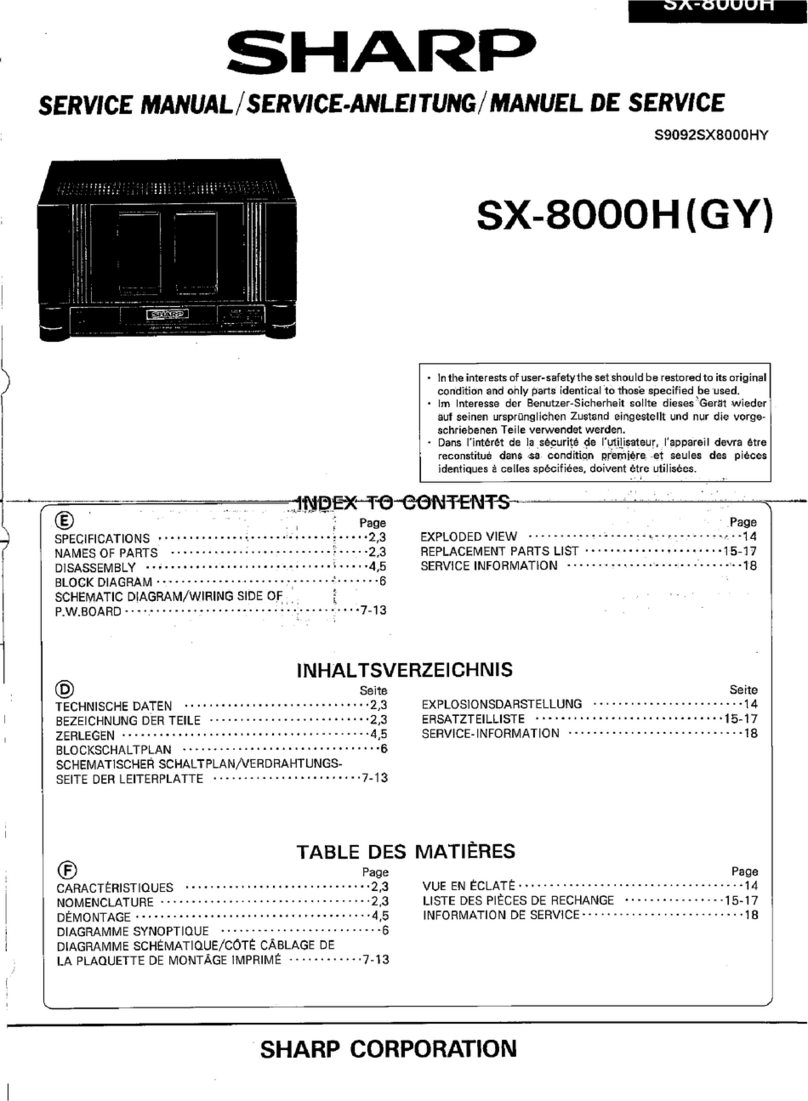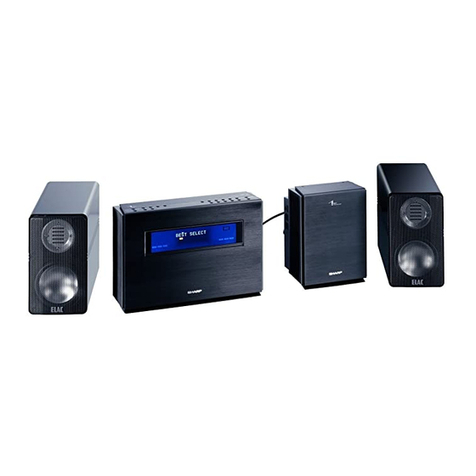Speakers
7th-order
(delta-sigma)
modulator
1-bit coding LSI
Fixed-voltage
high-speed
switching circuit Low-pass
filter network
1-bit
control
signals
Power
amplifier
switching
signal Out-
put
Fixed voltage
Analog signal
Multi-bit digital signal
(32kHz, 44.1kHz, 48kHz)
1-bit signal
Over-
sampling
Direct input
(delta-sigma) dynamic feedback
This product uses 1-bit signals as control signals.As a result, amplification which maintains a
1-bit signal performance is realized by switching the fixed-voltage power with precise quartz-
crystal accuracy.
Adopting the concept of “ (delta-sigma) Dynamic Feedback”, this product enables stable am-
plification faithful to the original sound by sending back the power voltage fluctuations (which
affects the audio signal) to the “7th-order (delta-sigma) modulator 1-bit coding LSI” which
corrects the 1-bit control signal in real time.
Samplingthe input signal ata high-frequency approx. 2.8MHz(64fs), the (delta-sigma) modu-
lation circuit yields a 1-bit signal stream which faithfully reproduces the original sound.
In this 7-th order (delta-sigma) modulation block, the quantization noise is shifted to higher
range to generate 1-bit signals which secure high signal to noise ratio in the playback band.
Using these 1-bit signals as control signals, the fixed-voltage high-speed switching circuit is con-
trolled. The signals abstracted from the switching circuit are sent to the low-pass filter network and
used to drive speakers.
This amplifier has no analog amplifier elements and can obtain speaker driving power by “creating
1-bit control signals through high-speed sampling” and “synchronized high-speed switching to the
sampling frequency”. In consequence, amplification with excellent movement and transient char-
acteristics is fulfilled.
1 bit amplification process
Connecting the AC power cord
Power supply voltage:
Thevoltageusedbythisproductvaries,depend-
ing on the shipping destination. Check if the
voltage written on the rear panel of the unit is
suitable for that of your country.
Notes:
Plug the AC power cord into a convenient
AC socket, after any connections.
Unplug the AC power cord from the AC
socket if the unit will not be in use for a
prolonged period of time.
Never use a power cord other than the one
supplied. Use of a power cord other than
the one supplied may cause an electric
shock or fire.
AC Plug Adaptor:
In areas (or countries) where an AC socket
as shown in illustration
2
is used, connect
the unit using the AC plug adaptor supplied
with the unit, as illustrated. TheAC plug adap-
tor is not included in areas where theAC wall
socket and AC power plug can be directly
connected (see illustration
1
).
Note for users in Australia and New
Zealand:
AnAC plug adaptor is not supplied if the cord
has an Australian Standard plug.
1
2
NOTES FOR USE
To AC INPUT
To an AC socket
Speaker cord connection
Be sure that the power is turned OFF when
connecting the speaker cord. Failure to
turn the power off can result in a short cir-
cuit that will place the amplifier into the
protection circuit mode and cause the
amplifier to shut down. If this occurs, make
sure that the amplifier is off, then discon-
nect the power cord from the socket to re-
set the circuit breaker. You can then re-
connect the cord to use the amplifier.
Volume setting
Make sure to set the volume to the mini-
mum sound level before turning on the
amplifier power or performing any input
switching. Failure to do this may result in
damage to your speaker system.
The supply voltage of the switching circuit
is not linked with volume adjustment.
Therefore, a constant voltage is supplied
even if not playing back sound and residual
sound may be generated slightly such as
when the volume is turned up. This is nor-
mal.
If a problem occurs
If this product is subjected to strong exter-
nal interference (excessive shock, static
electricity, abnormal supply voltage due to
lightning, etc.) or if it is operated incor-
rectly, it may malfunction.
In such a case, turn the power off.
Turn the power on again and check that the
product works normally.
(If problems still occur, contact the dealer.)

